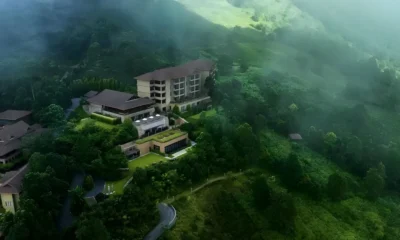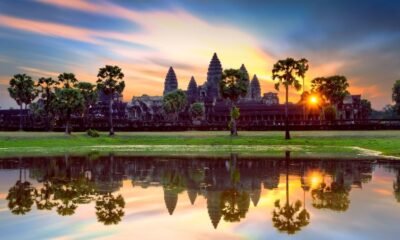Spiritual Travel
Madhya Pradesh Launches Ganga–Narmada Tourism Corridor to Link Spiritual Sites With Ayodhya, Varanasi, and Prayagraj in Uttar Pradesh: New Report You Need to Know
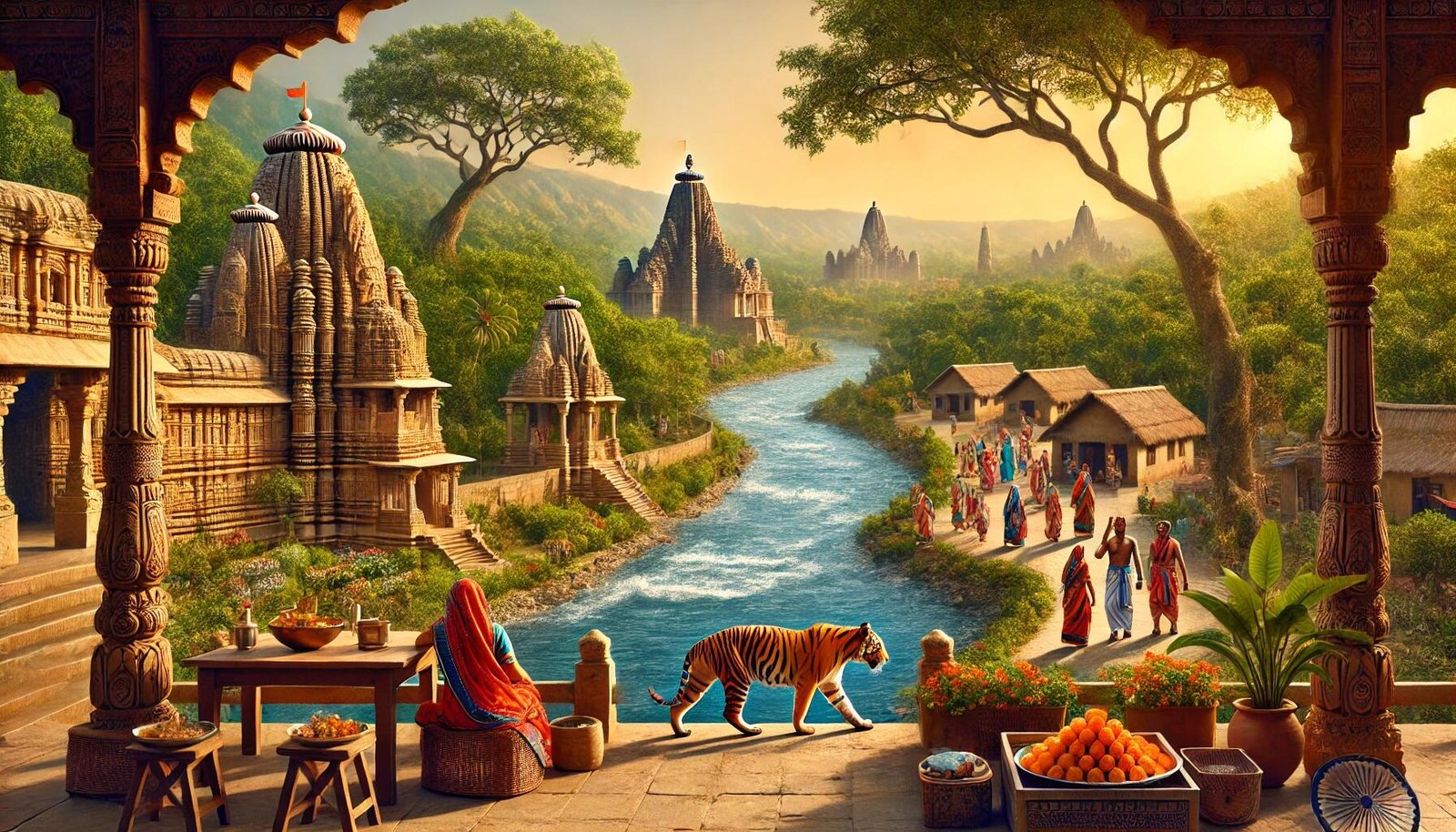
Friday, March 28, 2025
In a strategic move poised to reshape spiritual and cultural tourism in North and Central India, the Madhya Pradesh Tourism Board is prioritizing the Ganga–Narmada Tourism Corridor as a major initiative in its 2025 tourism roadmap. The project was spotlighted by Principal Secretary of Tourism, Sheo Shekhar Shukla, during his address at the Tourism Sustainability Summit 2025 in New Delhi.
The corridor aims to seamlessly integrate Madhya Pradesh’s iconic natural and religious sites with those of Uttar Pradesh, including Prayagraj, Ayodhya, and Varanasi — creating a unified, culturally rich tourism belt that spans rivers, temples, and timeless traditions.
Boosting inter-state tourism between Madhya Pradesh and Uttar Pradesh
At the heart of this initiative lies a vision to connect central India’s natural wonders and temples with the spiritual capitals of northern India. Through this corridor, tourists visiting Uttar Pradesh will be able to extend their journeys deeper into Madhya Pradesh’s storied landscapes and heritage sites.
For instance, pilgrims and heritage travelers arriving in Prayagraj will have the option to venture further into Rewa to witness the Maihar Mata temple, and then move toward Jabalpur’s Dhuandhar Waterfalls and Bhedaghat, both of which are famed for their dramatic marble cliffs and sacred Narmada River views.
Similarly, spiritual tourists visiting Varanasi for the Kashi Vishwanath Temple can expand their itineraries to include Omkareshwar and Mahakaleshwar Jyotirlingas in Madhya Pradesh, offering a rare chance to witness multiple Jyotirlinga pilgrimage sites in one comprehensive tour.
The Ram Path Gaman corridor, linking Chitrakoot with Ayodhya, is also under development as part of this broader religious circuit integration. This expansion is expected to elevate pilgrimage routes with historical and mythological significance, opening new possibilities for faith-based tourism operators and interstate travel planners.
FAM tours and targeted promotions in UP cities
To drive awareness and traffic across the corridor, the Madhya Pradesh Tourism Board is conducting FAM (familiarization) tours and customized promotional campaigns in key Uttar Pradesh cities including Prayagraj, Varanasi, Ayodhya, Kanpur, and Agra. These campaigns aim to engage local tour operators, pilgrimage agents, and regional influencers to build momentum around the new travel routes.
By strengthening ties with Uttar Pradesh’s travel industry stakeholders, the initiative promises to catalyze cross-state tour packaging, shared festival promotions, and destination pairing strategies — all of which benefit regional economies and local communities on both sides of the border.
Economic growth driven by spiritual and eco-cultural tourism
Currently, tourism contributes around 3%–3.5% to Madhya Pradesh’s Gross Domestic Product (GDP). The state has set a target to raise this to 4–5% by 2028, and a long-term vision to reach 8–10% by 2047. According to Sheo Shekhar Shukla, the state sees tourism not only as a promotional activity but as a core economic development strategy.
Shukla emphasized that tourism’s potential lies in its ability to generate livelihoods at scale. “An investment of ₹10 lakh in the tourism sector creates nearly 90 direct and indirect jobs, which is significantly higher than in many other industries,” he said.
This multiplier effect becomes especially impactful in rural and semi-urban areas — such as Rewa, Chitrakoot, and Jabalpur — where tourism-based micro-entrepreneurship, hospitality, transport, and handicrafts can create inclusive growth models. The state is actively seeking both public and private investment in its tourism infrastructure to support this scale-up.
Sustainability and heritage conservation remain guiding principles
At the Tourism Sustainability Summit, Shukla reiterated Madhya Pradesh’s commitment to preserving its natural, spiritual, and cultural heritage as it promotes growth. He highlighted that the Ganga–Narmada Corridor will be designed to support low-impact, community-inclusive tourism, with special focus on eco-sensitive zones, temple conservation, and heritage storytelling.
Workshops are also being organized with travel agents and hospitality leaders to co-create tour experiences that not only respect local customs and ecosystems but also highlight underexplored destinations across both states.
Positioning Madhya Pradesh as a central spiritual tourism hub
This initiative is expected to position Bhopal and Indore, already key gateways, as transit and spiritual tourism hubs for North and Central India. By connecting Madhya Pradesh’s sacred river Narmada with the Ganga belt of Uttar Pradesh, the project taps into India’s rich spiritual geography — a rising segment in both domestic and inbound travel markets.
With the Ram Mandir in Ayodhya, Kumbh planning in Prayagraj, and the rejuvenated Kashi Vishwanath corridor in Varanasi, the interlinking with MP’s own spiritual jewels — Mahakaleshwar, Omkareshwar, Amarkantak, Chitrakoot, Orchha, and Khajuraho — creates a powerhouse network of destinations rooted in mythology, devotion, and wellness.
Tourism outlook: A spiritual corridor with long-term global potential
The Ganga–Narmada Tourism Corridor is expected to attract religious pilgrims, cultural travelers, wellness tourists, and heritage seekers — both from within India and among the global Indian diaspora.
With better connectivity, immersive storytelling, and coordinated marketing across UP and MP, the corridor can become a flagship spiritual route on the global tourism map. As India looks to increase its share in the global cultural tourism market, such inter-state partnerships will be critical.
Spiritual Travel
Bilaspur Set to Transform into Himachal’s Ultimate Adventure and Spiritual Hub
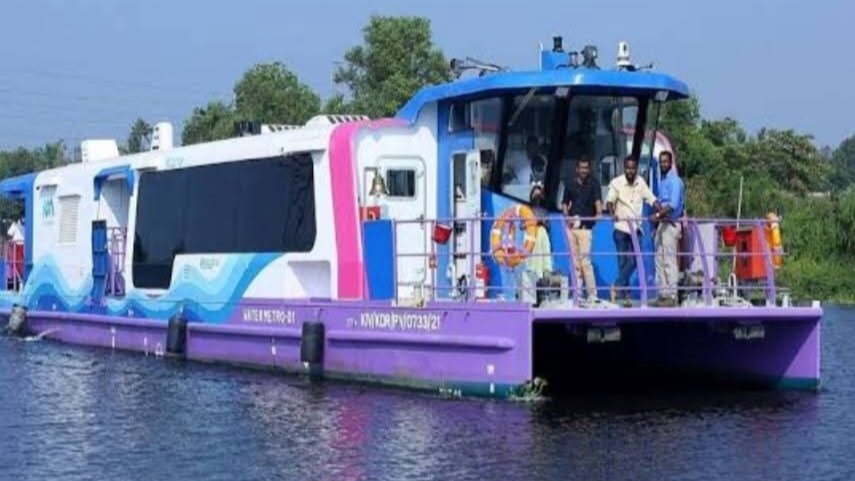
Move over, Manali and Shimla! Bilaspur is gearing up to become the state’s next big tourism hotspot, blending adrenaline-pumping adventures with serene spiritual experiences. The district administration has rolled out ambitious plans to develop water, land, and aerial tourism, promising something for thrill-seekers, pilgrims, and nature lovers alike.
A Sky-High Attraction: The Glass Bridge
Imagine walking on a transparent bridge, suspended high above breathtaking landscapes—Bilaspur’s upcoming Glass Bridge at Bharari will do just that! Designed to rival global attractions, this engineering marvel will offer daredevils an unforgettable experience while giving tourists a reason to extend their stay. Officials confirm the blueprint is ready, and construction will kick off soon after final approvals.
Sailing Through Scenic Routes: The Water Metro
Pilgrims visiting Maa Naina Devi will soon have a faster, more scenic journey thanks to the proposed Water Metro, connecting Bhakra Ghat to Kosariya Ghat. This isn’t just about convenience—it’s about turning travel into an experience. Devotees and tourists can hop on boats, enjoy the tranquil waters, and even transport their vehicles via waterways.
Jet Skis, Kayaking & More: Water Sports at Nakrana
Bhakra Dam’s pristine waters are about to get a lot more exciting! The district is eyeing water sports like jet skiing, kayaking, and boating to attract adventure junkies. The best part? Pilgrims heading to Naina Devi can now add a splash of adventure to their spiritual trip.
Bharari – The New Stopover Destination
Strategically located near Shimla, Manali, and Dharamshala, Bharari will soon feature modern tourist hubs with food plazas, parking, rest areas, and info centers. No more cramped pit stops—just smooth, comfortable breaks for travelers.
Listening to Locals: Boaters Get a Voice
Deputy Commissioner Rahul Kumar made sure local boat operators were heard during inspections, promising quick fixes to their concerns. This people-first approach ensures tourism growth benefits everyone.
Bilaspur’s transformation isn’t just about flashy infrastructure—it’s about jobs for youth, better travel experiences, and putting this hidden gem on India’s tourism radar. With projects set to launch soon, the district is poised to become a must-visit for those seeking adventure, spirituality, and untouched natural beauty.
Spiritual Travel
Shiva Tribe Debuts in Gurgaon’s Tikli-Raiseena: IMPC’s Bold Step to Merge Spirituality, Rural Tourism, and Modern Family Wellness
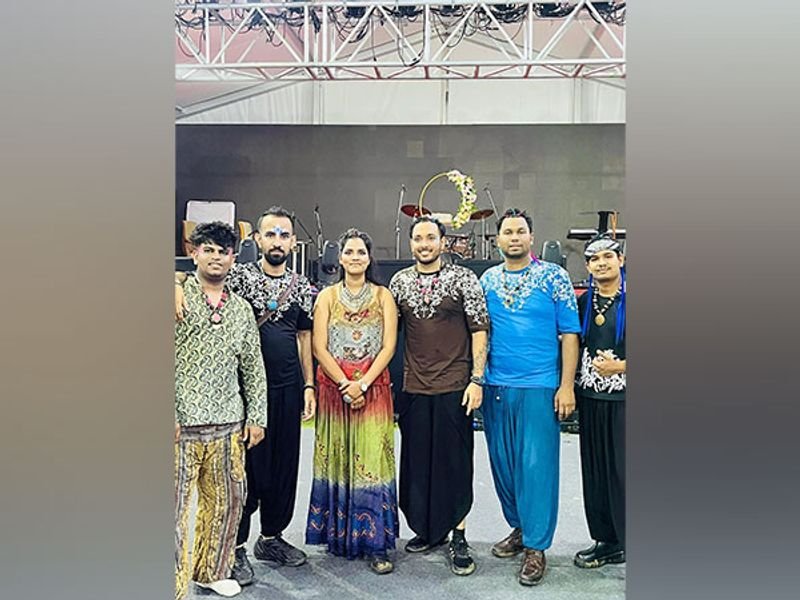
VMPL
New Delhi [India], August 4: In the lush rural landscape of Tikli-Raiseena near Gurgaon, a new chapter in India’s spiritual and rural tourism ecosystem quietly unfolded. The International Mandir Prabandhak Committee (IMPC) launched its ambitious spiritual wellness initiative–Shiva Tribe–an experience-driven, immersive space designed to reconnect Gen Z and modern families with India’s timeless spiritual roots.
Set against the tranquil backdrop of Haryana’s Aravalli fringes, Shiva Tribe is more than a mandir–it is a curated journey of self-discovery, holistic wellness, and cultural revival, seamlessly merging ancient wisdom with modern aspirations. The inaugural three-day Pran Pratishtha Mahotsav was held in July, graced by spiritual luminaries including Pujya Shri Sudhanshu Ji Maharaj, Pujya Shri Dayanand Ji Maharaj, and dignitaries such as Haryana’s former Minister Shri Om Prakash Dhankar. Business leaders, rural development advocates, and spiritual patrons attended in significant numbers–signaling a rising interest in faith-based tourism models.
Spiritual Tourism: India’s Growing Wellness Sector
India’s spiritual tourism market is undergoing a silent revolution. According to the Ministry of Tourism, the wellness and spiritual tourism segment is projected to reach USD 30 billion by 2028, growing at a CAGR of over 10%. With over 330 million domestic religious tourists recorded annually and rising international interest in authentic Indian experiences, initiatives like Shiva Tribe have the potential to create high-value, low-impact tourism models in rural belts–generating employment, fostering entrepreneurship, and revitalizing local economies.
“In today’s fragmented lifestyle, families are searching for meaningful escapes–not just vacations. Shiva Tribe is that sacred pause–a place to reconnect, reflect, and realign, together,” said Dr. Preet Sandhuu, mentor of the project and a key voice in India’s contemporary spiritual movement.
A New Blueprint: Spirituality Meets Community Living
Unlike traditional spiritual centers, Shiva Tribe offers a complete spiritual-eco retreat–including weekend live devotional music by its in-house ‘Shiva Tribe Band’, yoga sessions, mantra-infused meditations, Vedic rituals, and stay facilities for families. It’s a full-circle experience designed to inspire urban youth and families alike to step into a more conscious, value-driven lifestyle.
“Here, spirituality is not a sermon–it’s an experience,” said Shri MP Singh, project visionary and founder of ShivaTribe. “We want to build a network of such community-driven centers across rural India, using temple heritage as a catalyst for rural rejuvenation and youth engagement.”
Rural Regeneration Through Faith
The Tikli model aligns with India’s rural tourism policy goals by transforming underexplored rural regions into mindful tourism destinations. With over 60% of India’s population residing in villages, initiatives like this leverage India’s spiritual capital to promote rural entrepreneurship, handicrafts, organic farming, and ecotourism–creating a sustainable rural economy rooted in culture and community.
IMPC’s Broader Mission
The International Mandir Prabandhak Committee (IMPC), known for initiatives like the Mahasangam Yatra, Trisul Yatra and Shiv-Shakti Kendras, is rapidly becoming a bridge between India’s ancient temple traditions and its digital future. Its work focuses on temple modernization, spiritual leadership development, and community revival–backed by collaborations with scholars, saints, and civic leaders.
By anchoring the Shiva Tribe initiative in Tikli, IMPC demonstrates how faith-based community models can attract tourism, foster economic inclusion, and support national goals like ‘Viksit Bharat’ and ‘Digital Bharat’.
Shared by
(ADVERTORIAL DISCLAIMER: The above press release has been provided by VMPL. ANI will not be responsible in any way for the content of the same)
(This content is sourced from a syndicated feed and is published as received. The Tribune assumes no responsibility or liability for its accuracy, completeness, or content.)
Spiritual Travel
10 oldest temple towns in India for spiritual getaways – The Times of India
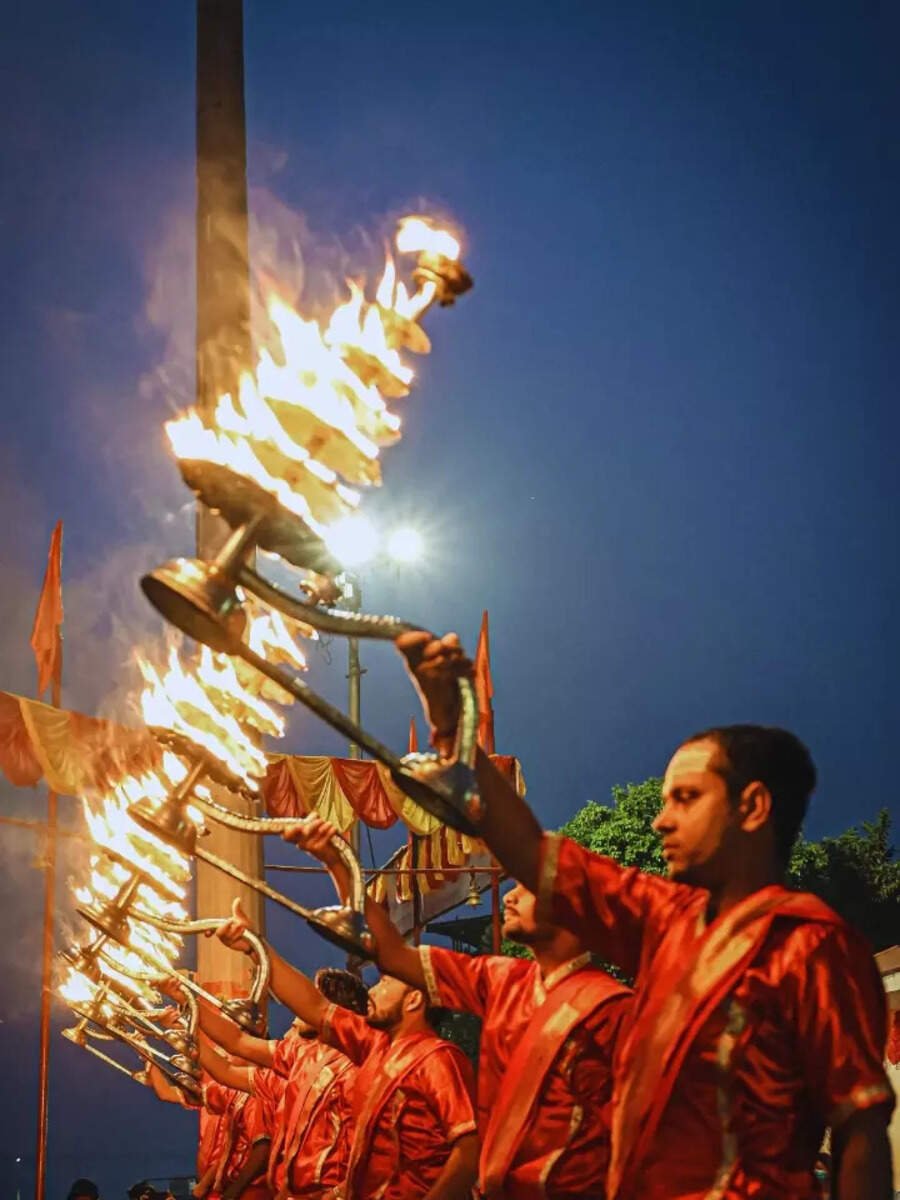
10 oldest temple towns in India for spiritual getaways The Times of India
Source link
-

 Brand Stories2 weeks ago
Brand Stories2 weeks agoBloom Hotels: A Modern Vision of Hospitality Redefining Travel
-

 Brand Stories1 week ago
Brand Stories1 week agoCheQin.ai sets a new standard for hotel booking with its AI capabilities: empowering travellers to bargain, choose the best, and book with clarity.
-

 Destinations & Things To Do2 weeks ago
Destinations & Things To Do2 weeks agoUntouched Destinations: Stunning Hidden Gems You Must Visit
-

 Destinations & Things To Do1 week ago
Destinations & Things To Do1 week agoThis Hidden Beach in India Glows at Night-But Only in One Secret Season
-

 AI in Travel2 weeks ago
AI in Travel2 weeks agoAI Travel Revolution: Must-Have Guide to the Best Experience
-

 Brand Stories1 month ago
Brand Stories1 month agoVoice AI Startup ElevenLabs Plans to Add Hubs Around the World
-

 Brand Stories3 weeks ago
Brand Stories3 weeks agoHow Elon Musk’s rogue Grok chatbot became a cautionary AI tale
-

 Asia Travel Pulse1 month ago
Asia Travel Pulse1 month agoLooking For Adventure In Asia? Here Are 7 Epic Destinations You Need To Experience At Least Once – Zee News
-

 AI in Travel1 month ago
AI in Travel1 month ago‘Will AI take my job?’ A trip to a Beijing fortune-telling bar to see what lies ahead | China
-

 Brand Stories2 weeks ago
Brand Stories2 weeks agoContactless Hospitality: Why Remote Management Technology Is Key to Seamless Guest Experiences





